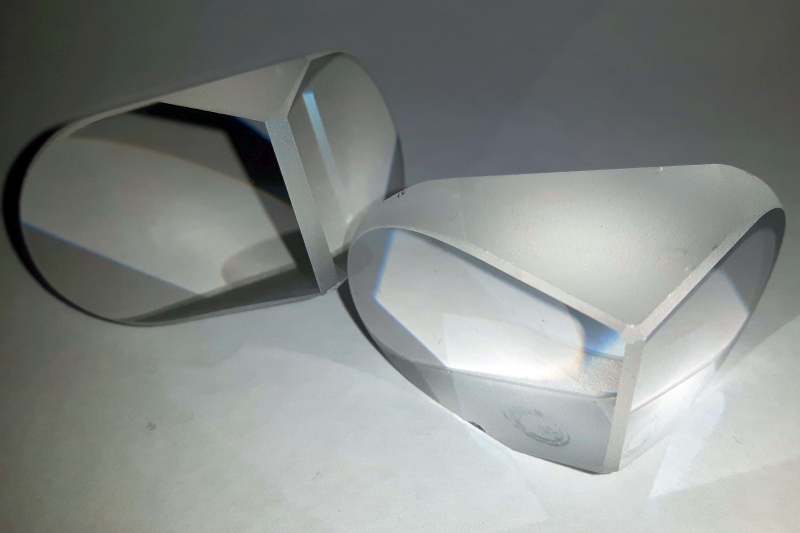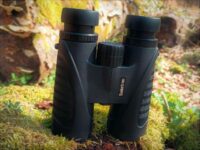Prisms in binoculars flip and reverse the virtual image so that you see a true image. There are different types of prisms used in binoculars. One design uses Porro Prisms, the other Roof Prisms. Each type has its own advantages and disadvantages, features, and characteristics. And what are the prisms for anyway?
But what is the function of prisms in binoculars?
Prism binoculars work according to the Kepler telescope principle. Telescopes produce an upside-down image and have a long focal length. Prism binoculars contain a reversing prism between the objective lens and the ocular (eyepiece) to reduce the length of the instrument and to reverse the projected image.
Porro-Prism
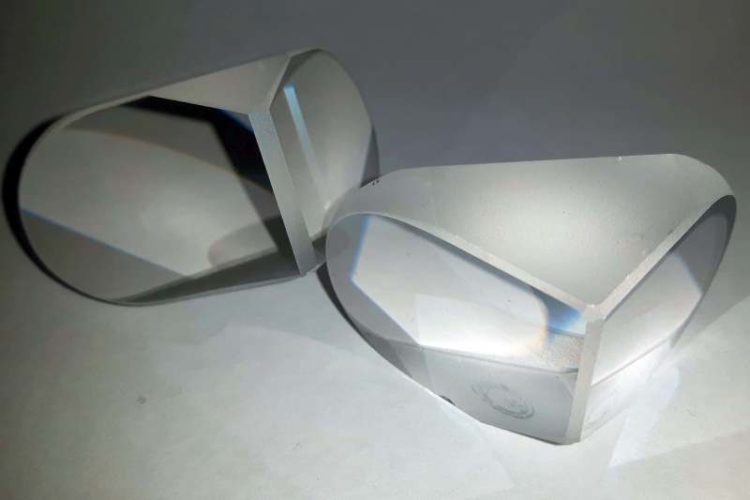 In Porro prism binoculars, the prisms are set at right angles to each other and redirect the light rays several times. The image is turned from left to right and from top to bottom. The stereoscopic design of the Porro prism binoculars provides a good spatial vision. The projected image appears three-dimensional, has a more plastic effect, and allows the observer to better estimate distances between viewed objects. Porro prisms are easy to manufacture and have the advantage that they consume little space inside the tubes of the binoculars. Binoculars with Porro prisms can be recognized by their broad construction.
In Porro prism binoculars, the prisms are set at right angles to each other and redirect the light rays several times. The image is turned from left to right and from top to bottom. The stereoscopic design of the Porro prism binoculars provides a good spatial vision. The projected image appears three-dimensional, has a more plastic effect, and allows the observer to better estimate distances between viewed objects. Porro prisms are easy to manufacture and have the advantage that they consume little space inside the tubes of the binoculars. Binoculars with Porro prisms can be recognized by their broad construction.
Porro Prisms in Binoculars
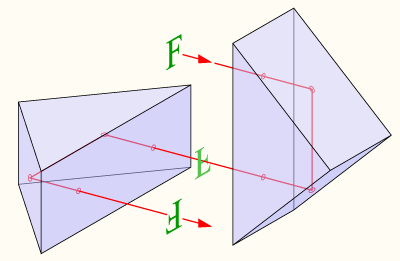
A Porro prism is a right angle triangular shaped glass prism. This is a reflecting prism. When the Porro prism is hit by a beam of light on the large rectangular face, the light enters and falls onto the two sloped faces of the prism.
By total internal reflection from these two faces, light exits the Porro prism from the same face from which it entered. So the exiting light is parallel to the incoming light and the projected image from this prism is inverted by 180°.
Porro prisms are used in pairs. The second prism is placed at an angle of 90° with respect to the first one. This arrangement is designed so that light can pass through both prisms. The Double Porro prism re-orientates the light beam resulting in a normal upright image.
Roof Prism
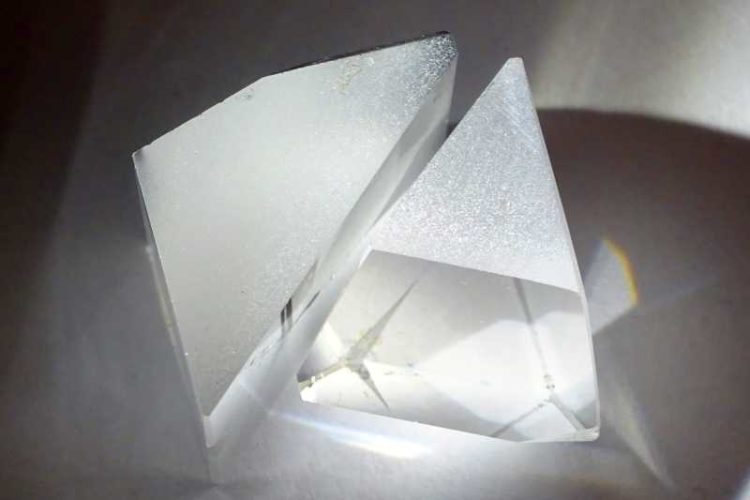 In a roof prism binocular, the prism’s reflective surfaces resemble those of a rooftop, hence the name. The system used in binoculars consists of two prisms, with at least one prism having a roof edge. There are several different roof prism combinations that can be used, depending on the design and purpose, and desired features of a roof prism binoculars.
In a roof prism binocular, the prism’s reflective surfaces resemble those of a rooftop, hence the name. The system used in binoculars consists of two prisms, with at least one prism having a roof edge. There are several different roof prism combinations that can be used, depending on the design and purpose, and desired features of a roof prism binoculars.
The most common today is Schmid-Pechan’s prism system. It consists of a reflective surface with a metallic mirror vapor steam coating (eg silver). Roof prisms are reflecting prisms with two faces, separated by a narrow air gap, meeting each other. These two faces of this prism form a roof-like structure, that’s why the name roof prism is given to this prism shape.
When a light beam enters a Schmid-Pechan’s prism it enters the first prism vertically and is reflected at the inner face near the air gap and reflected again on the underside of the prism after which it exits the prism via the air gap and vertically enters the second prism. The vertical entrance into the second prism reduces refraction and reflection losses at the entrance and exit surfaces. Due to the double reflection, only the beam path is deflected, the image orientation remains unchanged.
Roof Prisms in Binoculars
Roof prism binoculars with premium glass and precision prisms produce high-quality images.
Roof prisms enable slim binoculars. However, the costs of producing roof prisms are higher than those for Porro prism binoculars.
Differences in Binoculars build and design
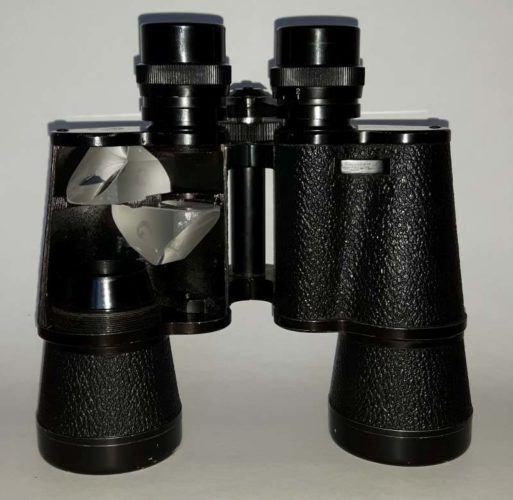
Both Porro prism binoculars and Roof prism binoculars are designed to get a clear image of the distant object. But there are some basic differences in their designs.
Porro prism binoculars
- have a typical design that has a wide hinge between the two oculars. This design helps in adjusting the size of the binoculars according to your face. The light that enters through its objective lens passes through a zigzag path before coming out from its eyepiece. Due to the path of light passage, Porro prism binoculars have a bulkier wider design than roof prism binocular.
Roof prism binoculars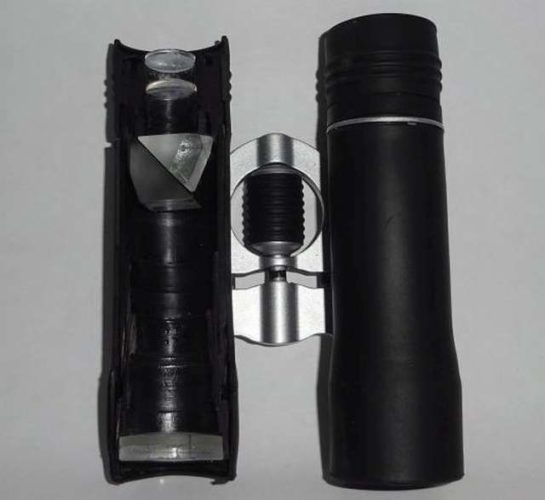
- have a sleek and compact design. The hinge between the two oculars is small presenting a structure like a letter H. The path of the light is straight thus giving it a more slim design. The Objective lens is straight in line with the eyepiece.
Pros and Cons
In Porro prism binoculars, the eyepieces are connected by a bridge. Focusing is achieved by turning the focus wheel, this simultaneously shifts the eyepieces. This eyepiece bridge can be a weak point in cheap binoculars. If the eyepieces don’t harmonize and move slightly asynchronous then this results in two different sharp images.
If you want to have binoculars for occasional viewing the beauty of nature or wildlife, then Porro prism binoculars are best to use. These are less costly and are easily affordable. Porro’s can provide a high-quality image with little loss of light. These binoculars are simple to design. Spatial vision, the impression of depth is better in Porros than in Roof prism binoculars making them more suitable to estimate distances between viewed objects.
At close range, however, Porro prisms are at a disadvantage.
Good Roof prism binoculars demand a more complicated binoculars design and are usually used in more expensive binoculars. The aligned objective lens and eyepiece allow a compact sleek design. Prisms used in these binoculars need to be designed with more precision and quality than the Porro prisms.
Roof prism glasses don’t have an external bridge that joins the two eyepieces as in Porro glasses. Focusing is done by moving lenses inside the device. There are no moving parts outside, the mechanics of the binoculars are protected. Waterproof and fog proofing is easier to realize in Roof Prism binoculars.
For near field viewing of small objects, Roof prisms binoculars perform much better than Porro glasses. Depth perception is less in roof prism binoculars than in Porro prism binoculars.
Porro Prism vs Roof Prism Binoculars, Which is Better?
The difference between Porro prism and Roof prism binoculars is in the design and the respective features. Roof prism binoculars have lately become more popular than Porro prism binoculars. However, Porro prism binoculars are great for watching birds or other small objects.
It is difficult to say whether Porro prism or Roof prism binoculars are better. Of both types, there are good and not so good instruments. When you buy either from a reputable manufacturer both will perform well. However, if the price tag reads the same, then it is likely that the Porro prism binoculars are the better choice.
If price matters, then Porro prism binoculars should be your choice. If money is no issue and you are after sleek, water and weatherproof premium binoculars, then Roof prism binoculars are what you like.
